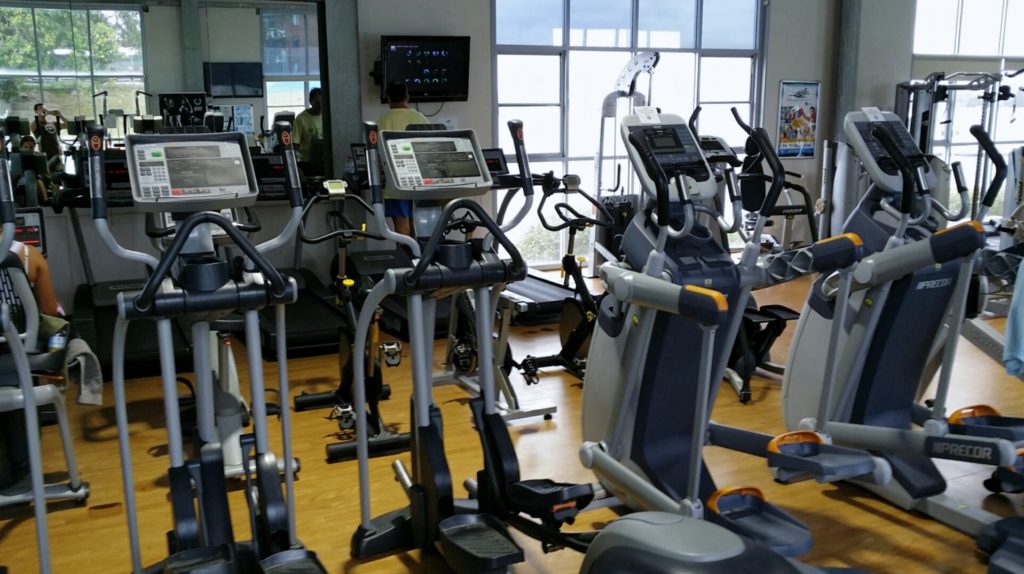Find out what the most commonly believed health and fitness myths are, and how they’ve been holding you back.
The intention of working out is pretty obvious. Whether male or female, the goal of hitting the gym or doing a workout routine is to get fit, stay in shape, and work towards a better you.
Despite personal reasons for exercising – dropping a dress size, running a half marathon, or just feeling less guilty about eating dessert – there are certain myths that beginners, average gym-goers, and professional athletes all believe to be true. These false-facts can trip up just about anyone, and often do.
I am not a nutritionist, health professional, or fitness instructor. However, after quite a bit of research, years of personal experience, receiving different styles of coaching as an athlete, just trying to find time in the busy life of a young adult to maintain a healthy lifestyle, and figuring out the balance of it all, this is what I have come up with. That being said, this is not just a list of workout advice compiled from hearsay or friends, not just the latest trend in the workout world, and not just the flashy and bright colored add-in to your favorite fitness magazine promising you “FLAT ABS FOREVER AND LIFELONG LEAN LEGS.” This isn’t a guide, or a workout program, or an undisputable scientifically proven path to the newer, healthier you. THIS is the countdown of the top 10 health and fitness myths, exposed, explained, and debunked just for you.
Myth 10. “No pain, no gain”
Um…wrong. Exercising should not leave you in pain or with injury. You absolutely should push yourself and dig deep to get the results you want, but if at any point you are actually in pain or cannot breathe, you are way past a healthy intensity level, according to Fitbie and Extreme Body Fit. No, this does not mean the moment you start sweating you should stop. Sweating and breathing hard are a part of a good workout, but there is a big difference between muscle fatigue and muscle/joint pain. When it is more than fatigue, your muscles won’t just be tired, but possibly feel sharp pain and extreme discomfort. Pain is not weakness leaving the body. It is your body’s way of telling you to stop, and that you are hurting yourself. Listen to your body, not Jane Fonda.
Myth 9. “Moderate aerobic workouts create the ultimate fat-burning zone”
If you are just joining a gym or starting to workout for the first time, this may show you very limited results. But for ideal fat burn, health, and fitness, you need to mix it up. According to The Washington Post, higher intensities will burn more fat, but you have to build up to those levels. Aerobic endurance is key to a cardio routine that really makes a difference. Along with this, interval training has long proven to be far more beneficial than moderate workouts, like running on a treadmill at the same speed for a long period of time at the “fat burning zone” setting.
Myth 8. “You can eat whatever you want, as long as you exercise.”
As much as I wish this were true, sadly, it is not. No matter how fast or far you run, or how many calories the treadmill says you burn, you will not get the “perfect beach body” unless you take individual metabolism, a healthy diet, and fat intake into account. According to Fitday, this myth is often accepted and is the reason fat loss takes so long to see. I have made this mistake over and over. Just because you start running a few extra miles a day does not mean you can intake a few extra thousand calories. This type of calorie boost is for professional athletes only, who are working out hours on end, every single day, as it is their professional job. Nutrition is a key factor, often unknowingly forgotten, in getting fit. This doesn’t mean you should starve yourself or that ice cream is off limits – especially as someone who loves sweets – but know your goals and how serious you are about them. Caloric intake is important, and if you are just focusing on weight loss, there should be an specific intended caloric deficit of calories burned versus calories taken in.
Myth 7. “Stretching before working out prevents injury”
As a dancer and athlete, this took quite a bit of convincing for me not to believe. But it is, in fact, a myth. According to CNN and Forbes, stretching does prevent injury when done after a workout, but stretching before working out actually destabilizes and weakens muscles. This does not prepare them for strenuous activity but can sometimes limit range of motion. What IS beneficial before a workout is a warm-up, which instead gets blood pumping, and your heart rate going.
Myth 6. “Adopting a gluten-free diet will boost weight loss and improve overall health”
Unfortunately, eating gluten-free is not guaranteed to have health benefits or assist in weight loss. According to The Huffington Post, it is not unhealthy to eat gluten-free if you are actually allergic to gluten because of Celiac Disease. However, going gluten free is not exactly worth the price difference. It will certainly make your grocery bill go up, and the size of your wallet shrink, but there is not much proof to support that a gluten-free diet will shrink your thighs or slim your waist.
Myth 5. “Cardio burns more fat anything else”
You can run all you want, but resistance training burns more calories. You definitely burn calories doing cardio, but you burn calories during resistance training, and for up to 48 hours after, depending on the consistency and rigor of the resistance training. According to Fitbie, added benefits are also boosting metabolism, improving insulin resistance, and eliminating fat-storing enzymes. Ideally, you really need a mix of training, including both cardio and resistance. Variety is key when it comes to total fat burn.
Myth 4. “Gaining weight on the scale means that you are not losing weight or that you are getting fatter”
No, no, no. Ever heard that muscle weighs more than fat? People do not often think about where their pounds are coming from. According to The Washington Post, a pound of fat takes up more space than a pound of muscle on the body. This is why people get frustrated when they do not see weight loss accompany their fitness goals. Especially when first starting to lift, the body’s response is often to build lean muscle, but where people get confused is that this muscle gain comes with a large amount of water, often leading to water retention. This is often mistaken for fat. Don’t worry, eventually this will go away and the muscles will begin to peak out. As you gain muscle and lean out, however, you may find yourself ten pounds heavier, but two jean sizes smaller. The number on the scale is not as important as how you feel, and how your body responds.
Myth 3. “It is okay to skip meals and save the calories for later”
Okay, this is not how it works people. Skipping breakfast and eating a granola bar for lunch in order to have that night out with dinner, wine, and dessert does not balance out. According to Health Line, when you eat so erratically and skip meals, you are much more likely to be irritable, even hungrier, and eat more in the end. A good way to kick this habit is to eat five small meals a day, and reach for foods high in protein and nutrients to stay fuller longer. This way you are less likely to grab calorie-rich and fatty foods later on. Again, don’t starve yourself. Just eat smarter, and remember your goals. That said, I am not going to deprive myself a piece of cake. I may, however, make sure to balance out my small meals so I still get in the nutrients I need.
Myth 2. “ Women will get big, or bulky, if they lift heavy weights. They should lift light weights with high repetitions.”
Wrong. It is so untrue that women will gain the bulk and muscle mass that men do if they lift heavy weights. According to Fitness Magazine, men and women have different hormones and will not have the same results from lifting heavy weights. Men have 20 to 30 times more testosterone than women, which is why they get so much bigger from lifting. Ladies, you will not end up looking like the Hulk if you reach for the heavy weights. That said, it’s about progress, so start with what you are comfortable with and work your way up. Cardio will not do it all for women. In order to see changes, you need to add resistance training.
Myth 1. “Crunches and ab workouts will spot reduce belly fat”
Do 1,000 crunches. If your overall body fat percentage is too high, you won’t see any difference. According to several fitness professionals, including those at True Star Health and Extreme Body Fit, high percentages of body fat cover your abs, and crunches alone cannot burn that fat. Spot training abs just does not work. To chisel and tone abs, you need to burn the belly fat, but also overall body fat, and additionally build muscle. This again, means lots of cardio, resistance, and strength training. Doing workouts that target more than one area of the body are best for overall fat burn because spot reduction in one area alone will not show great results.
Originally posted thecelebritycafe.com 17th July 2013






















